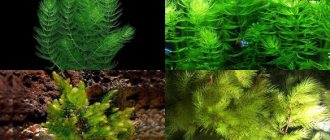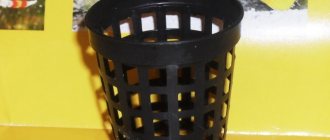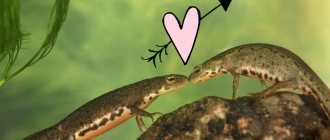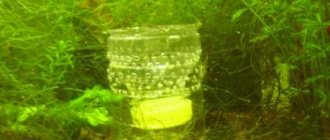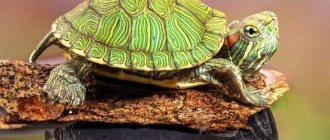Golden stars of flowers on bright green creeping vines are the loosestrife, beloved by the villagers of medieval Rus'. It was this plant that was brewed as a tea drink before Tsar Mikhail Fedorovich received real tea leaves as a gift from Chinese ambassadors. This article will tell you about the reasons for the popularity of loosestrife, its use in folk medicine and landscape design, and offer the most effective recipes for tea from this plant.
Loosestrife photo
Loosestrife - description of the plant
The most noticeable morphological feature of this perennial herbaceous plant is its long creeping shoots, dotted with “ears” - paired opposite leaves. These leaves are almost round, for which the plant received the name “coin loosestrife” (the spelling “coin loosestrife” is allowed).
Its Latin name is Lysimachia nummularia. The loosestrife received its generic name lysimachia in honor of Lysimachus, one of the military leaders of Alexander the Great, who, according to legend, first found it. The specific name is derived from the word “coin” - “nummulus”. And among the people the plant is known under the names meadow tea, penny grass, nibbles, lawn grass. For its ability to quickly capture territory, loosestrife received the nickname “snake root.”
The stems of meadow tea reach a length of 50-60 cm. They are light green, almost yellow, and are clearly visible in the foliage. From a distance it seems that these are skewers for canapés, studded with pieces of kiwi fruit. They lie on the ground, spreading in all directions from the center, and if the plant is rooted on a cliff, they hang picturesquely from it.
For a more complete botanical description, it is important to note that:
- stems, leaves and even petals are dotted with small dark glands;
- the flowers are axillary, on long stalks, covering the middle part of the shoot;
- the plant is well adapted to wintering along with the leaves.
Loosestrife is self-sterile and generally does not reproduce well by seed. This must be taken into account when growing it in garden plots and when preparing medicinal raw materials.
Long creeping shoots are a feature of the loosestrife
Plant Lysimachia plastic blue-violet (13cm)
This Personal Data Privacy Policy (hereinafter referred to as the Privacy Policy) applies to all information that the Zverinus online store, located on the domain name , can receive about the User while using the website of the Zverinus online store (hereinafter referred to as the Site), programs and products of the online store.
1. Definition of terms
1.1. The following terms are used in this Privacy Policy:
1.1.1. “Administration of the website of the online store (hereinafter referred to as the Site Administration)” - authorized employees to manage the site, acting on behalf of Individual Entrepreneur Dmitry Konstantinovich Maksimov, who organize and (or) carry out the processing of personal data, and also determine the purposes of processing personal data, the composition of personal data data to be processed, actions (operations) performed with personal data.
1.1.2. “Personal data” - any information relating to a directly or indirectly identified or identifiable individual (subject of personal data).
1.1.3. “Processing of personal data” - any action (operation) or set of actions (operations) performed using automation tools or without the use of such means with personal data, including collection, recording, systematization, accumulation, storage, clarification (updating, changing), extraction, use, transfer (distribution, provision, access), depersonalization, blocking, deletion, destruction of personal data.
1.1.4. “Confidentiality of personal data” is a requirement for the Operator or other person who has access to personal data to comply with the requirement not to allow their distribution without the consent of the subject of personal data or the presence of another legal basis.
1.1.5. “User of the website of the online store (hereinafter referred to as the User)” is a person who has access to the Site via the Internet and uses the Website of the online store.
2. General provisions
2.1. The User's use of the Site constitutes agreement with this Privacy Policy and the terms of processing of the User's personal data.
2.2. The user must stop using the Site if he disagrees with the terms of the Privacy Policy.
2.3. This Privacy Policy applies exclusively to the website of the online store Store Name. The site administration does not control and is not responsible for third-party sites that the User can access via links available on the Site.
2.4. The accuracy of the personal data provided by the Site User is not verified by the Site Administration
3. Subject of the privacy policy
3.1. This Privacy Policy governs the obligations of the Site Administration to ensure protection of the confidentiality of personal data and their non-disclosure.
3.2. Personal data permitted for processing under this Privacy Policy is provided by the User when filling out the registration form on the Site or when placing an order to purchase the Product.
3.3. The online store collects statistics about the IP addresses of its visitors. This information is used to identify and solve technical problems and to monitor the legality of financial payments.
3.4. Any personal information is subject to secure storage and non-distribution, except for the cases provided for in paragraphs. 5.2. and 5.3. of this Privacy Policy.
4. Purposes of collecting the user’s personal information
4.1. The administration of the online store website may use the User’s personal data for the following purposes:
4.1.1. Identification of the User registered on the Site for placing an order and/or concluding an Agreement for the sale and purchase of goods remotely.
4.1.2. Providing the User with access to personalized resources of the Site.
4.1.3. Establishing feedback with the User, sending notifications, requests regarding the use of the Site, provision of services, processing requests and applications from the User.
4.1.4. Determining the location of the User to ensure security and prevent fraud.
4.1.5. Confirmation of the accuracy and completeness of personal data provided by the User.
4.1.6. With the User's consent to create an account to make purchases.
4.1.7. Notifications to the Site User about the status of the Order.
4.1.8. Processing and receiving payments, confirming taxes or tax benefits, disputing a payment, determining the User's eligibility for a line of credit.
4.1.9. Providing the User with effective customer and technical support if problems arise with the use of the Site.
4.1.10. Providing the User with his consent, product updates, special offers, pricing information, newsletters and other information on behalf of the online store or on behalf of the online store’s partners.
4.1.11. Carrying out advertising activities with the consent of the User.
4.1.12. Providing the User with access to the sites or services of partners of the online store in order to receive products, updates and services.
5. Methods and terms for collecting personal information
5.1. The processing of the User's personal data is carried out using automation tools or without their use, without a time limit, in any legal way.
5.2. The User agrees that the Site Administration has the right to transfer personal data to third parties, in particular, its counterparties, courier services, postal organizations, telecommunication operators, solely for the purpose of fulfilling the User’s order placed on the Site, including delivery of the Goods.
5.3. The User's personal data may be transferred to authorized government bodies of the Russian Federation only on the grounds and in the manner established by the legislation of the Russian Federation.
5.4. In case of loss or disclosure of personal data, the Site Administration informs the User about the loss or disclosure of personal data.
5.5. The site administration takes the necessary organizational and technical measures to protect the User’s personal information from unauthorized or accidental access, destruction, modification, blocking, copying, distribution, as well as from other unlawful actions of third parties.
6. Obligations of the parties
6.1. The user is obliged:
6.1.1. Provide information about personal data necessary to use the Site.
6.1.2. Update and supplement the provided information about personal data if it changes.
6.2. The site administration is obliged to:
6.2.1. Use the information received only for the purposes specified in clause 4 of the Privacy Policy.
6.2.2. Take the necessary precautions to ensure secure storage of personal information; do not disclose, sell, exchange, publish, etc. without the prior written permission of the User. received personal data of the User, with the exception of paragraphs. 5.2. and 5.3. of this Privacy Policy.
6.2.3. Block/delete personal data relating to the relevant User from the moment of application or request from the User, or his legal representative or the authorized body for the protection of the rights of personal data subjects for the period of verification, in the event of detection of unreliable personal data or unlawful actions.
7. Additional terms
7.1. In case of loss or disclosure of Confidential Information, the Site Administration is not responsible if this confidential information:
7.1.1. Became public domain until it was lost or disclosed.
7.1.2. Was received from a third party before it was received by the Site Administration.
7.1.3. Was disclosed with the consent of the User.
7.2. The site administration has the right to make changes to this Privacy Policy without the consent of the User. The new Privacy Policy comes into force from the moment it is posted on the online store Website, unless otherwise provided by the new edition of the Privacy Policy.
7.3. All suggestions or questions regarding this Privacy Policy should be reported to the section of the online store website.
Chemical composition of loosestrife
The biochemical side of loosestrife has been studied quite well. Our ancestors intuitively sensed a rich list of biologically active substances in meadow loosestrife tea:
- the neurotransmitter acetylcholine and its precursor choline;
- rutin and other glycosides with P-vitamin activity;
- fatty oils abundantly secreted by glands;
- caffeic and other organic acids;
- vitamin C.
Loosestrife is completely non-toxic; it can be included in green fodder and hay for farm animals.
Where does loosestrife grow?
Meadow tea is a typical inhabitant of Europe. In Russia, it is distributed from the North Caucasus to the Kola Peninsula and from the Kaliningrad region to the Altai Territory. To the east of the Yenisei it occurs in single specimens as an alien plant.
Wild loosestrife grows everywhere, but it forms more lush clumps in low relief areas, where there is a little less sun and a little more water. Prefers floodplain meadows, small ravines, banks of ponds and swamps. Cultivated forms require little shading.
Where does the plant grow
Cointail grows in meadows, pastures, along the banks of rivers, swamps and lakes in Europe, North America, China, Japan, preferring low-lying damp areas, including those flooded for short or long periods of time. The plant easily adapts both to life in relatively dry conditions and to existence under water. Loosestrife feels best in places brightly illuminated by the sun's rays. In the design of gardens it is used as ground cover and hanging components.
Use of loosestrife
This medicinal plant is used only in folk medicine. Its main use is to prevent scurvy in winter. In remote villages, loosestrife leaves are still brewed as a tonic tea.
There are other ways to benefit from penny herb:
- fresh juice stops minor bleeding;
- compresses are soaked in the decoction for applying to wounds and eczema;
- infusion treats cough with copious sputum, gout, thrush;
- A paste of fresh leaves relieves pain and swelling from cuts, bruises, and damaged ligaments.
In Eastern European countries, lysimachia is recommended for facial skin care for acne and acne, and for rinsing hair with excessive dandruff formation. Veterinarians use dried root powder to clean fly larvae from animal wounds.
The plant is used only in folk medicine
Contents of the coin box
Caring for a coin box.
The coin holder is not suitable for keeping in tropical warm aquariums. In order for it to feel good, look elegant and decorate the underwater landscape, it is necessary to place it in favorable living conditions.
Primary requirements:
- an aquarium with a volume of 20 liters or more, if there is a possibility that the specimen will grow beyond its limits, you can use a lid;
- clean, constantly filtered water with weekly changes of at least 30% of the total volume;
- pH value from 6 to 8;
- temperature +16…+22°C, exceeding these values stimulates accelerated growth and elongation of shoots, smaller leaves, which can lead to loss of decorative qualities;
- degree of mineralization (hardness) 6-15°F;
- bright fluorescent lighting for 12 hours; with insufficient lighting, the lower leaves degenerate, exposing the stem;
- slightly silted soil; with a lack of nutrients, additional lateral roots grow from the nodes under the leaves (the plant tries to get food from the water);
- Coarse sand and small pebbles are suitable as a substrate.
Such conditions promote gradual growth of up to 5 cm per week.
The preferred place in the aquarium is in the middle ground, closer to the side glass, where there is more natural light.
As care, periodic root feeding and pruning are recommended to maintain the desired height and shape of the fast-growing plant. The cut tops, if planted nearby, will quickly take root and begin to grow. The thickets of lysimachia created in this way will serve as a favorite recreation area, where schools of small fish will play and hide in the leaves of the plant.
Medicinal properties and possible harm of loosestrife
It has been experimentally shown that the substances that make up meadow tea have the following effects:
- hemostatic;
- antiviral;
- antibacterial.
Rutin in conjunction with vitamin C strengthens capillary walls and increases the overall level of immunity, which explains the beneficial effect of meadow tea on patients with colds. Loosestrife preparations normalize the composition of the blood, preventing its excessive “thinning.” In this regard, there are contraindications for the use of the plant - varicose veins, a tendency to thrombus formation, hypertension, sclerosis of the blood vessels of the extremities. Loosestrife is not recommended for dry cough.
How to plant and care for a plant
With the help of penny grass you can luxuriously decorate your garden plot. The plant has established itself in landscape design as an excellent ground cover for open ground. Drooping shoots decorate balconies, verandas, terraces, and creeping shoots cover the edges of garden paths and the ground around solitaire plantings.
Loosestrife looks impressive along the banks of artificial reservoirs, on the shaded slopes of alpine hills. In temperate zones and to the north, meadow tea grows well in the sun. Gardeners appreciate the original Aurea variety with light, almost golden leaves.
Loosestrife is propagated by rooting cuttings at any time of the growing season. They don’t even need to be treated with root formation stimulants—moist soil is enough. In the fall, you can divide an adult bush. Delenki take root well in well-moistened soil without bright lighting.
Planting and care for loosestrife are quite simple:
- Any soil is suitable for the plant, except clean sand and heavy loam;
- fertilizers are needed only on initially poor soil - peat mulch will do;
- watering is required only during drought;
- In autumn or early spring, thickets require clearing of dried shoots.
When loosening the soil, excess loosestrife roots are mercilessly cut off with a shovel, otherwise the plant begins to behave like a weed and may even “crawl” to its neighbors. This invader is planted along the edge of the site only if there is a road behind the fence or a wasteland begins. It is not recommended to plant a lawn with meadow tea, since by autumn some of its leaves dry out and spoil the appearance of the lawn.
Decorating a garden plot with loosestrife
Popular types and varieties
There are several varieties of loosestrife:
- Common loosestrife has tall, straight stems covered with hair. The leaves are ovoid or oval, collected in rosettes of 3-4 pieces. and are arranged in a ring around the stem. The bright golden buds bloom in June and fade in late summer. They form complex inflorescences resembling a pyramid. The culture prefers shade or partial shade on the site, well-moistened soil. It can grow in water, but at a depth of no more than 8-9 cm.
- Loosestrife is a perennial species, the vertical stems of which form a dense bush up to 80 cm high. The foliage has an elongated shape. The buds are placed in the leaf axils in 1-2 pieces. They have a yellowish corolla with an orange center. Small bells have a star shape. The variety prefers dark planting sites, moist soil, and blooms late - at the end of June. The plant should be limited because it grows quickly, displacing its neighbors. Popular varieties: Alexande with white and Golden Alexander with a golden edging along the edge of the leaf plate.
- The loosestrife is distinguished by its decorativeness - a rare species that grows in China and southern Primorye. Unlike other varieties, lily of the valley loosestrife grows poorly. Its developed root lies deep and requires a large amount of soil. The variety loves well-lit areas. Stems are straight, tall, slightly branched, pubescent. The leaves are large, lanceolate, pointed in shape. Another difference between the species is the white color of the inflorescences. The buds are long, bloom towards the end of July and bloom for no longer than 20 days. The Lady Jane variety has stems 70-90 cm high, suitable for cutting.
- Purple loosestrife is another original species that is distinguished by its wine-red foliage. Lemon-yellow flowers, located in the axils of the leaves in the upper part of the shoot, bloom late, in August-September. This is a low-growing (only 45 cm in height) variety that prefers well-lit, sunny areas.
- Another low-growing species is the ciliated one. It is a perennial with erect stems up to 0.5 m high, which branch from the base, less often - higher. The leaves are large (up to 15 cm in length), oval-lanceolate with a pointed end. Lemon-yellow, bell-shaped flowers with long pedicels form a loose inflorescence. In Russia, only the Firecracker variety with wine-colored leaves is cultivated.
Collection, preparation and storage of loosestrife
In folk medicine, loosestrife is used entirely: with roots and shoots. Harvesting is carried out during flowering - from May to August, since at this time meadow tea accumulates a maximum of vitamin C. The bushes are dug up with a spatula (pulled out from sandy loam soil), carefully shaken off lumps of earth and dried in the shade under a canopy. Store raw materials in paper bags in a dry place.
Since the plant is collected from the roots, when harvesting wild raw materials, it is necessary to leave several specimens to renew the population.

